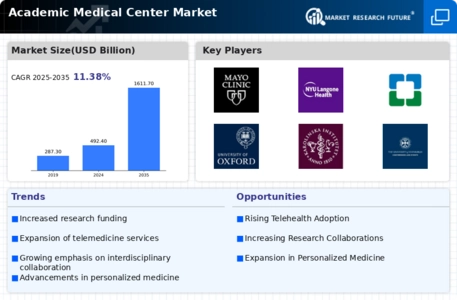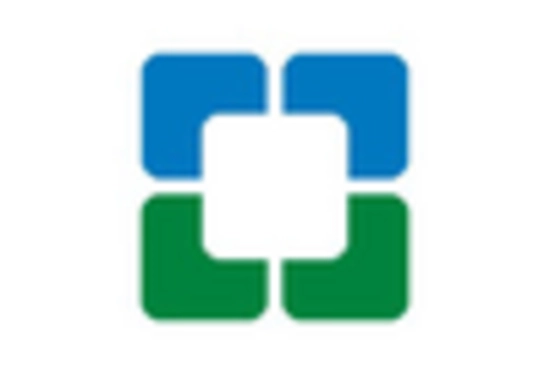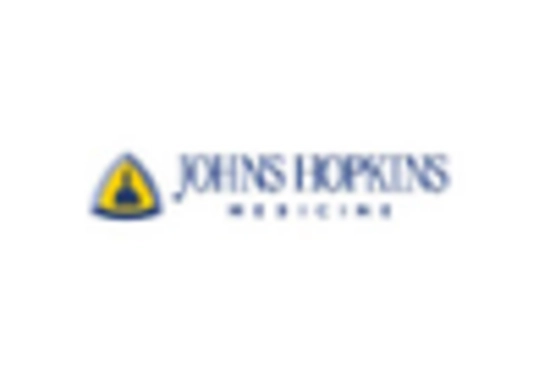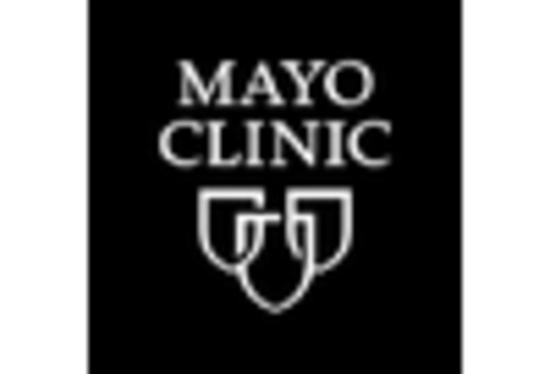Advancements in Medical Research
The Academic Medical Center Market is significantly influenced by ongoing advancements in medical research. These centers are at the forefront of clinical trials and innovative treatment methodologies, which are crucial for the development of new therapies. The National Institutes of Health (NIH) reports that funding for medical research has steadily increased, allowing academic medical centers to explore novel approaches to disease management. This influx of research funding not only enhances the reputation of these institutions but also attracts top-tier talent and fosters collaboration with pharmaceutical companies. As a result, the Academic Medical Center Market benefits from a continuous pipeline of new treatments and technologies, which can lead to improved patient outcomes and increased operational efficiency.
Increased Focus on Preventive Care
The Academic Medical Center Market is witnessing a shift towards preventive care, which is reshaping healthcare delivery models. This trend is largely driven by a growing awareness of the importance of early intervention in managing health conditions. Academic medical centers are increasingly incorporating preventive strategies into their care protocols, emphasizing health education and lifestyle modifications. Data suggests that preventive care can reduce healthcare costs by up to 30%, making it an attractive option for both patients and providers. By focusing on prevention, these centers not only enhance patient health outcomes but also alleviate the burden on acute care services. Consequently, the Academic Medical Center Market is likely to evolve, prioritizing preventive measures alongside traditional treatment approaches.
Rising Demand for Specialized Care
The Academic Medical Center Market is experiencing a notable increase in demand for specialized healthcare services. This trend is driven by an aging population and a growing prevalence of chronic diseases, which necessitate advanced medical interventions. According to recent data, the number of individuals aged 65 and older is projected to reach 1.5 billion by 2050, significantly impacting healthcare needs. Academic medical centers, with their focus on research and education, are well-positioned to meet this demand by providing cutting-edge treatments and specialized care. Furthermore, the integration of advanced technologies in diagnostics and treatment options enhances the capabilities of these centers, making them essential players in the healthcare landscape. As a result, the Academic Medical Center Market is likely to expand, driven by the need for high-quality, specialized medical services.
Collaboration with Technology Firms
The Academic Medical Center Market is experiencing a surge in collaborations with technology firms, which is transforming healthcare delivery. These partnerships are aimed at integrating advanced technologies such as artificial intelligence, telemedicine, and electronic health records into clinical practice. By leveraging these innovations, academic medical centers can enhance patient care, streamline operations, and improve data management. For instance, the use of AI in diagnostics has shown to increase accuracy and reduce the time required for analysis. As technology continues to evolve, the Academic Medical Center Market is expected to adapt, fostering an environment where technological advancements play a pivotal role in enhancing healthcare services.
Growing Emphasis on Patient-Centered Care
The Academic Medical Center Market is increasingly prioritizing patient-centered care, reflecting a broader shift in healthcare towards more personalized approaches. This emphasis on patient engagement and satisfaction is driven by the recognition that involving patients in their care decisions leads to better health outcomes. Academic medical centers are implementing strategies to enhance communication, provide tailored treatment options, and ensure that patient preferences are considered in care plans. Research indicates that patient-centered care can lead to improved adherence to treatment and higher satisfaction rates. As this trend continues to gain traction, the Academic Medical Center Market is likely to evolve, focusing on creating a more holistic and responsive healthcare experience for patients.


















Leave a Comment